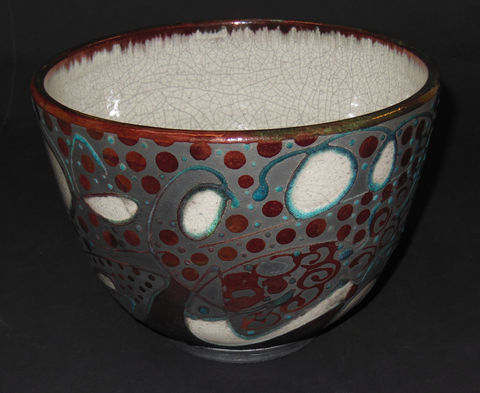Current Hours:
Tuesday - Saturday 10am - 5pm
Sunday 11:30 - 5:30
or by appointment
Please call: 828 963 4288
C E L E B R A T I N G 43 Y E A R S

John Turner
Japanese potters invented raku in the sixteenth century. Chojiro, who died in 1592, and his descendants became known as the Raku family. They made shapes that were confined almost entirely to hand-modeled tea bowls that were used in the Japanese tea ceremony. In the beginning, they used steel tongs to unload red-hot kilns in order to quickly fire another load. Some of the glowing red-hot pots were inadvertently placed in dry grass or leaves, which burst into flames. When the pots cooled, the potters found that they were crisscrossed with attractive black lines. The black lines appeared because the glaze crackled on the rapidly cooling pots and the fire from the leaves penetrated the cracks and blackened the clay body underneath it.This procedure remains largely unchanged to this day, though most potters today drop the red-hot pots in a bed of sawdust or other combustibles.
Although raku in the West does not serve the ceremonial purpose that raku in Japan serves, it can provide potters with a sense of freedom and an active collaboration with the kiln and flames that more rigid controlled firing methods do not provide. It is the unexpected effects of that process that result in the enduring, unique and timeless beauty of raku.










